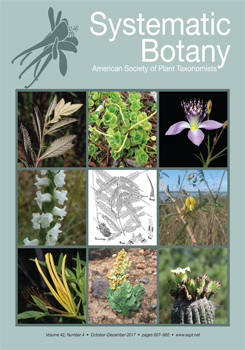Species delimitation in Pinaceae is often challenged by limited morphological differentiation and introgression. In Tsuga (hemlocks), species delimitation has been most challenging among northeastern Asian taxa, where the species are weakly marked morphologically and range in number from three to five in previous studies. Two low-copy nuclear four-coumarase-ligase (4CL) genes andmorphology strongly support a clade of the Japanese endemic T. diversifolia and T. sieboldii from Japan and Ulleung island (Ulleungdo) in Korea. This clade is here referred to as the oceanic hemlocks. 4CL strongly supports a sister-group relationship of the widespread northeastern Asian T. chinensis and eastern North American T. caroliniana. In contrast, chloroplast genomes, which are markedly reduced in Tsuga and relatives, strongly support Japanese T. sieboldii as sister to T. chinensis and moderately support T. caroliniana as sister to a clade of T. diversifolia and hemlocks fromUlleungdo. These divergent topologies suggest chloroplast capture of T. chinensis by Japanese T. sieboldii. Ulleungdo hemlocks are distinct from other northeastern Asian species in leaf and cone morphology and phenologically in common-garden observations. We therefore describe these hemlocks as a new species, T. ulleungensis.
BioOne.org will be down briefly for maintenance on 17 December 2024 between 18:00-22:00 Pacific Time US. We apologize for any inconvenience.
How to translate text using browser tools
18 December 2017
A New Species and Introgression in Eastern Asian Hemlocks (Pinaceae: Tsuga)
Garth Holman,
Peter Del Tredici,
Nathan Havill,
Nam Sook Lee,
Richard Cronn,
Kevin Cushman,
Sarah Mathews,
Linda Raubeson,
Christopher S. Campbell
ACCESS THE FULL ARTICLE

Systematic Botany
Vol. 42 • No. 4
December 2017
Vol. 42 • No. 4
December 2017
chloroplast capture
island endemic
plastid genomes
quantitative morphology
Ulleungdo




